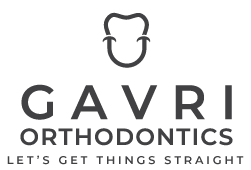As a parent, navigating your child’s dental health can feel overwhelming, especially when it comes to orthodontics. Did you know that the American Association of Orthodontists recommends scheduling your child’s first orthodontic exam by age seven?
This crucial step helps ensure that their teeth and jaw are developing correctly, setting the foundation for a healthy smile and boosted self-esteem.
During an orthodontic consultation, you’ll receive a thorough evaluation of your child’s teeth, along with a discussion on any potential issues. The orthodontist will outline a treatment plan tailored to your child’s needs, whether it involves immediate intervention or simply monitoring growth.
Understanding the importance of these early assessments can empower you to make informed decisions about your child’s dental care.
Importance of Early Orthodontic Consultation
Early orthodontic consultations play a vital role in your child’s dental health and development. Scheduling an evaluation by age seven allows orthodontists to identify any issues before they become more complex.
Recommended Age for First Visit
The American Association of Orthodontists recommends scheduling your child’s first visit by age seven. At this age, permanent teeth typically begin to emerge, making it easier for the orthodontist to spot alignment issues or other concerns.
Early evaluations help in planning appropriate interventions, ensuring better outcomes and potentially shorter treatments later.
Signs That Indicate a Need for Consultation
Certain signs may indicate a need for an orthodontic consultation. Here are some key indicators to observe:
- Crowded or Crooked Teeth: If your child has teeth that appear crowded or misaligned, this warrants a consultation.
- Overbite or Underbite: If your child’s upper teeth significantly overlap the lower teeth or vice versa, it’s time to seek an evaluation.
- Difficulty Chewing: If your child struggles with biting or chewing food, this may suggest underlying alignment issues.
- Thumb-Sucking or Mouth Breathing: Prolonged thumb-sucking or habitual mouth breathing can affect dental development and necessitate a check-up.
- Speech Difficulties: If your child experiences speech challenges, these may relate to dental alignment or bite issues.
Recognizing these signs and scheduling an evaluation can lead to timely interventions, which promote healthier dental development.
What Happens During an Orthodontic Consultation?
During an orthodontic consultation, you’ll gain insights into your child’s dental health and what may be needed to achieve an ideal smile. The visit typically includes gathering medical information, performing examinations, and utilizing diagnostic tools.
Initial Medical and Dental History
The process starts with completing new patient paperwork that includes your child’s medical and dental history. This information helps the orthodontist evaluate any existing health concerns and prior dental treatments.
The medical history ensures your child is healthy enough for orthodontic care, while the dental history provides context on their previous checkups and procedures.
Orthodontic Examination Process
The orthodontic examination involves a thorough visual assessment of your child’s mouth and jaws. The orthodontist looks at tooth positioning, spacing, and jaw alignment.
This part also includes taking photographs of your child’s face and teeth for detailed records. Through this process, the orthodontist identifies current issues and potential future problems that may require attention.
Diagnostic Imaging and Impressions
X-rays play a crucial role in understanding underlying dental conditions. The orthodontist will likely perform several types of imaging, such as panoramic and cephalometric X-rays, which capture a comprehensive view of your child’s teeth and jaw.
Approximately two-thirds of a tooth’s mass lies beneath the surface, making these images vital for detecting hidden issues. Along with the X-rays, your child may undergo impressions to create accurate models of their teeth, aiding in the development of an effective treatment plan.
Understanding Treatment Options
Understanding the various orthodontic treatment options empowers you to make informed decisions for your child’s dental health. Each option has unique characteristics, durations, and follow-up requirements.
Types of Orthodontic Treatments
- Traditional Braces: Traditional braces consist of metal brackets and wires. These components gradually move teeth into the correct position. This is the most common option, especially for children.
- Clear Braces: Clear braces utilize tooth-colored ceramic brackets. These alternative braces are less noticeable than metal options, providing a more aesthetic choice without sacrificing effectiveness.
- Invisalign: Invisalign employs a series of clear aligners that can be removed for eating or brushing. This option offers flexibility but requires responsibility to wear them as directed for optimal results.
- Interceptive Treatment: During the interceptive phase, early interventions may include removing baby teeth to aid the eruption of permanent teeth. Practitioners might also use appliances like jaw expanders or retainers to address growth discrepancies.
- Braces on Permanent Teeth: Placing braces on front permanent teeth may help align crooked or rotated teeth. This option can create the necessary space for additional teeth to erupt correctly.
Duration of Treatment and Follow-Up Visits
The duration of orthodontic treatment varies based on the type chosen and the complexity of the case. Traditional braces typically require 18 to 24 months, while Invisalign might range from 6 to 18 months depending on the treatment objective.
Follow-up visits usually occur every 4 to 8 weeks. These appointments allow the orthodontist to monitor progress, make adjustments, and ensure that the treatment stays on track.
Regular attendance at follow-up visits is crucial for achieving desired outcomes within the projected timeframe.
Key Questions for the Orthodontist
As you prepare for your child’s orthodontic consultation, asking key questions ensures you understand the treatment process. Prioritizing these inquiries can provide clarity on your child’s dental care needs.
Questions About Experience and Credentials
- Ask about the orthodontist’s qualifications, including degrees, certifications, and professional memberships. Ensure they’re a member of the American Association of Orthodontists.
- Inquire about their experience with specific treatments. Confirm how many cases similar to your child’s they’ve treated.
- Discuss the length of their practice. Determine if they specialize in pediatric orthodontics and how that experience aligns with your child’s needs.
- Request information about ongoing education. Understanding how the orthodontist stays current with advancements in orthodontic care can provide reassurance regarding their expertise.
- Ask about available treatment options. Learn about braces, clear aligners, and any other alternatives suitable for your child’s situation.
- Inquire about treatment duration. Understand the expected timeline and factors that may impact it, such as the complexity of the case.
- Discuss the estimated costs associated with treatment. Get a breakdown of potential expenses, including procedures, equipment, and maintenance requirements.
- Request advice for home care. Understand oral hygiene practices, dietary restrictions, and tips for making the orthodontic experience more comfortable for your child.
Preparing for the Orthodontist Visit
Preparation for the orthodontist visit fosters a smoother experience for both you and your child. Discussing expectations and understanding the evaluation process helps alleviate anxiety.
How to Talk to Your Child About Braces
Engage in open conversations about braces. Explain the purpose of braces in correcting teeth alignment.
Encourage your child to express any fears or concerns, particularly about discomfort or appearance. Address their common worries, such as:
- Pain: Assure your child that braces use gentle pressure, making the experience more comfortable than in previous generations.
- Embarrassment: Highlight that many peers wear braces, normalizing the experience. Share family photos of members who wore braces to foster connection and solidarity.
- Change: Discuss how braces can enhance their smile in the long term, instilling a sense of excitement about the positive outcome.
These discussions empower your child, helping them feel more at ease during their visit.
Special Considerations for Children with Needs
Orthodontic consultations for children with special needs require tailored approaches to ensure comfort and effective treatment. Understanding accommodating strategies aids in a successful experience for both parents and children.
Accommodations for Children with Special Needs
Orthodontists often offer customized environments, such as quieter waiting areas or less stimulating exam rooms. Visual aids and social stories help explain the process, alleviating anxiety.
Flexible appointment times may reduce stress by avoiding peak hours. Additional time during consultations allows for thorough explanations and reassurance. Staff trained in special needs support can provide expert guidance, making the visit more comfortable.
Communication strategies, including clear, concise language and visual demonstrations, accommodate various understanding levels. Using simple, straightforward questions encourages participation and reduces overwhelm. Prior discussions about oral health and treatment options empower parents, helping them to guide their children effectively.
Ensuring an open line of communication with the orthodontist allows parents to express specific needs or concerns. Providing all relevant medical history offers a comprehensive view of each child’s unique situation, facilitating a personalized approach to treatment.
Recognizing these accommodations ensures that orthodontic consultations are supportive, respectful, and beneficial for all children, regardless of their needs.
Conclusion
Understanding the importance of orthodontic consultations for your child is crucial for their dental health. By scheduling an evaluation by age seven you can catch potential issues early and set the stage for a healthy smile.
Being proactive in seeking an assessment allows you to explore treatment options and make informed decisions tailored to your child’s needs. Open communication with the orthodontist will help you navigate the process and address any concerns.
With the right preparation and knowledge you can ensure a positive experience for both you and your child on this journey toward optimal dental health.
Frequently Asked Questions
When should my child first see an orthodontist?
It’s recommended that children have their first orthodontic evaluation by age seven. This is when permanent teeth begin to emerge, allowing orthodontists to identify potential alignment issues early.
Why is early orthodontic evaluation important?
Early evaluations help catch dental problems before they develop into more complex issues. By identifying alignment concerns early, parents can make informed decisionsabout their child’s treatment options.
What should I expect during the orthodontic consultation?
During the consultation, the orthodontist will review the child’s medical and dental history, conduct a visual examination, take diagnostic images, and may create dental impressions to assess teeth alignment.
What are the common signs my child needs an orthodontic evaluation?
Signs that may indicate a need for evaluation include crowded or crooked teeth, overbites or underbites, difficulty chewing, thumb-sucking, mouth breathing, or speech difficulties.
What are some common orthodontic treatment options?
Common treatment options include traditional braces, clear braces, Invisalign, and interceptive treatment. Each option varies in duration, effectiveness, and follow-up care needed.
How long does orthodontic treatment usually take?
Typically, traditional braces require 18 to 24 months of treatment, while Invisalign can range from 6 to 18 months. The duration depends on the complexity of the dental issues being addressed.
How often will follow-up visits be needed during treatment?
Follow-up visits are generally scheduled every 4 to 8 weeks to monitor progress and make adjustments, ensuring the treatment stays on track for optimal results.
What questions should I ask during the orthodontic consultation?
Parents should inquire about the orthodontist’s qualifications, experience, available treatment options, expected duration, and estimated costs. This helps clarify the treatment process and sets realistic expectations.
How can I prepare my child for their first orthodontist visit?
Discuss expectations with your child, explain the purpose of braces, and address any concerns they may have. Knowing what to expect can help reduce anxiety for both parents and children.
Are there special considerations for children with special needs?
Yes, accommodations can include quieter waiting areas, visual aids, and staff trained in supporting special needs. Open communication between parents and orthodontists is vital to ensure personalized care.
Gavri Orthodontics: The Best Care for Your Child’s Smile
Early orthodontic consultations are essential for detecting and treating dental issues. At Gavri Orthodontics, we make sure your child’s orthodontic care is tailored to their unique needs.
Don’t wait—schedule their consultation today and give them the best start to a perfect smile!

